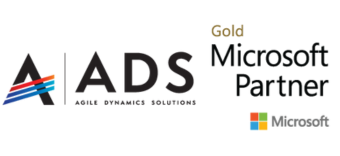E-Invoicing Integration with ERP System
Amidst the rapid growth of technology, combining Electronic Invoicing (E-Invoicing) with Enterprise Resource Planning (ERP) systems is essential for organizations looking to enhance efficiency and simplify financial processes.
Table of Contents
Introduction
In a digital era where speed and accuracy are important, businesses are increasingly recognizing the importance of integrating E-Invoicing with ERP systems. This synergistic approach not only minimizes manual work but also significantly enhances data accuracy, marking a transformative shift in financial operations.
Advantages of E-Invoicing Integration with ERP

E-Invoicing and ERP integration offer countless advantages for businesses looking to optimize their financial workflows. Streamlined workflow, enhancing accuracy and cost savings are just a few of the compelling benefits.
1. Streamlined Workflow
The integration streamlines the entire invoicing process. It automates the creation, delivery, and processing of invoices, reducing manual intervention and the risk of errors. This efficiency leads to faster approval cycles and improves overall workflow.
2. Enhanced Accuracy and Data Consistency
Integration ensures seamless communication between these 2 systems, minimizing discrepancies and ensuring data consistency. With automated data entry and synchronization, businesses can rely on accurate and up-to-date financial information, reducing the likelihood of errors associated with manual input.
3. Cost Savings and Improved Efficiency
By reducing the need for paper printing and manual processing, cost savings are achieved. Moreover, the efficiency gained through automation allows businesses to allocate resources more effectively, focusing on strategic tasks rather than time-consuming processes.
How E-Invoicing Works
E-Invoicing involves the digitization of the invoicing process, providing a faster and more accurate alternative to traditional paper-based methods. Understanding the intricacies of E-Invoicing is crucial for businesses aiming to modernize their financial operations.
Understanding ERP System
Enterprise Resource Planning (ERP) systems serve as comprehensive hubs that integrate various business processes. Exploring the core functionalities of ERP is essential to grasp how it complements and enhances E-Invoicing.
The Synergy Between E-Invoicing and ERP

The integration of E-Invoicing with ERP systems is not just a technical alignment—it’s a strategic synergy. This section digs into the compatibility and the remarkable benefits that arise from their seamless integration.
1. Unified Data Flow
One key aspect of the synergy is the establishment of a unified data flow between E-Invoicing and ERP systems. These two components seamlessly exchange information, ensuring a consistent and accurate data stream across the entire organization. This integration minimizes data silos, reduces redundancy, and enhances the overall accuracy of financial data.
2. Efficiency in Financial Process
The integration fosters efficiency in financial processes by eliminating manual tasks and facilitating automated workflows. E-Invoicing integration with ERP systems enables a streamlined approach to tasks such as invoice creation, approval, and payment processing. This efficiency not only accelerates the invoicing cycle but also allows for more agile decision-making based on real-time financial insights.
3. Comprehensive Business Insights
Another remarkable benefit lies in the comprehensive business insights derived from the seamless integration. The synergy between the systems provides a holistic view of financial data. Business leaders can access real-time information on cash flow, outstanding invoices, and financial performance, empowering them to make informed decisions. This integration enhances visibility into financial operations, supporting strategic planning and financial management.
Common Challenges and Solutions

Despite the benefits, businesses may face challenges during the integration process. This section identifies common challenges and provides practical solutions to overcome them.
1. System Compatibility Issues
Challenge: Integrating E-Invoicing with ERP systems can be hindered by compatibility issues between different software versions or legacy systems.
Solution: Conduct a thorough assessment of existing systems before integration. Choose integration solutions that offer compatibility with the current IT infrastructure. In some cases, upgrading or updating systems may be necessary to ensure seamless integration.
2. Data Migration Complexities
Challenge: Transferring large volumes of data from existing systems to the integrated E-Invoicing and ERP solution can be complex and prone to errors.
Solution: Develop a meticulous data migration plan that includes data cleansing, validation, and testing phases. Consider implementing data migration tools or seeking assistance from experts to ensure a smooth transition. Regular backups and validation checks are essential to minimize data discrepancies.
3. User Resistance and Training Needs
Challenge: Employees may resist the changes associated with E-Invoicing and ERP integration due to unfamiliarity with the new processes.
Solution: Prioritize comprehensive training programs to familiarize employees with the integrated systems. Provide training sessions, workshops, and user manuals to address any apprehensions and build confidence. Involving employees in the transition process and emphasizing the benefits of the integrated system can help overcome resistance.
Measuring ROI in E-Invoicing and ERP Integration

Understand how to measure the return on investment is crucial for businesses. This section defines key performance indicators (KPIs) and provides insights into assessing the success of the integration.
1. Improved Efficiency Metrics
Key Indicator: Reduction in manual processing time and errors.
Insights: Measure the time saved in manual invoicing and processing tasks after integration. Fewer errors and quicker workflows indicate improved efficiency, leading to a positive ROI.
2. Cost Savings Analysis
Key Indicator: Decrease in operational costs.
Insights: Compare the costs associated with manual invoicing before integration with the costs after implementation. Consider factors such as paper usage, printing, and manual labor. A noticeable reduction indicates cost savings and a positive return on investment.
3. Enhanced Cash Flow and Timely Payments
Key Indicator: Improved cash flow and reduced payment delays.
Insights: Analyze the impact of integration on cash flow by assessing the time taken from invoicing to payment receipt. A streamlined process should result in quicker payments, contributing to improved cash flow and a positive ROI.
Conclusion
The integration of E-Invoicing with ERP systems marks a significant milestone in the digital transformation of financial processes. The seamless synergy between these technologies streamlines operations, reduces errors, and drives businesses into a new era of efficiency.
FAQs
Is E-Invoicing integration suitable for small businesses?
Yes, E-Invoicing integration can benefit businesses of all sizes by reducing manual tasks and improving efficiency.
What challenges might businesses face during the integration process?
Common challenges include system compatibility issues, data migration complexities, and the need for effective training.
Are there specific industries that benefit more from this integration?
Various industries, from manufacturing to services, can benefit. Case studies illustrate applications in different sectors.
How can businesses measure the success of E-Invoicing and ERP integration?
Measuring ROI through key performance indicators and assessing improvements in efficiency and accuracy are common metrics.
Interested to learn more about e-invoicing?
Book a FREE consultation session today!
*Our representative will contact you within 24 hours after submitting the form, this excludes weekends and public holidays.



